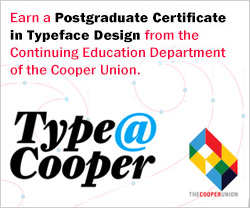2018 Typeface Design Competition Judge’s Choice: Mirza
Every year, each of our eleven TDC competition judges choose their favorite from all the entries. These Judges’ Choice selections will be highlighted in the Type Directors Club annual, The World’s Best Typography – Typography 39, which will be published later this year.
The award-winning work will be shown in Antwerp, Belgium as part of the ATypI conference, September 12 – 15.
As a preview, we want to tell you more about the Mirza typeface, created by Tehran’s Amir Mahdi Moslehi of Bagh-e Tafarroj Studio, which was one of four typeface designs that received the Judges’ Choice badge. Read why typeface design judge Sahar Afshar thought Mirza was among the year’s best.
About Mirza Typeface
- Typeface Design: Amir Mahdi Moslehi
- Design Firm: Bagh-e Tafarroj Studio, Tehran
- Client: Maryam Soft
Mirza is a contemporary Nastaliq typeface based on the hand of Mirza Gholam-Reza Esfahan, one of the most celebrated Persian calligraphers of Qajar era. This typeface is the result of an extensive study on the best specimens of Mirza Gholam-Reza’s work during the last decade of his life.
Mirza is a display typeface that fully supports Arabic, Persian and Urdu languages. The Nastaliq figures in this typeface are designed based on the traditional technique seen in Qajar seals.
Comments by Typeface Design Judge Sahar Afshar
The challenges of designing a calligraphic Arabic typeface are immense and many. In addition to the expected undertaking of designing various alternatives for contextual connections and numerous ligatures to overcome the limitations of current technology, there is the added demand for consistency and precision perfectly balanced with thoughtful nuances.
In Arabic calligraphy, there is neither space nor tolerance for imprecision in proportions, stroke widths, and balance. On top of all this, there is a cascading baseline, space-dependent diacritic sizes, and required extensions across several characters and connections. The technical complications alone warrant a floral tribute to Moslehi, who sets the bar high with Mirza.
But Moslehi’s design goes above and beyond this to stand out from the rest. Mirza is a weave of jarring strands — immense control in the smoothest flow of one letter to the next, the proximity of hairline stroke to dense knot, and elegant curves against unswerving but never straight lines.
Even at its core, Mizra embraces a mix of history and the poetic. Mirza Gholam-Reza Esfahani’s calligraphic hand and the deliberate construction of each letterform is reflected in letters which, in any given word, seem as though they were never separate, but always sharing the same spine. Mirza never feels typed; instead, it represents a calligraphic tradition, and presents as hand-drawn: it imagines the future, while remembering the past.
About Sahar Afshar
Sahar Afshar is a type designer and researcher from Iran. Her interest in typography during her years as a student at the University of Tehran led her to the University of Reading, from which she holds an MA by Research in Typography & Graphic Communication. Since graduation, she has been working on the design, consultation and quality assurance of Arabic typefaces, as well as researching the printing of Arabic and Indic scripts. She is currently based in the UK, and is a doctoral candidate at Birmingham City University, where she also works as a research assistant to the Centre for Printing History and Culture.
Read more about Sahar here and follow her online: Instagram | Twitter









